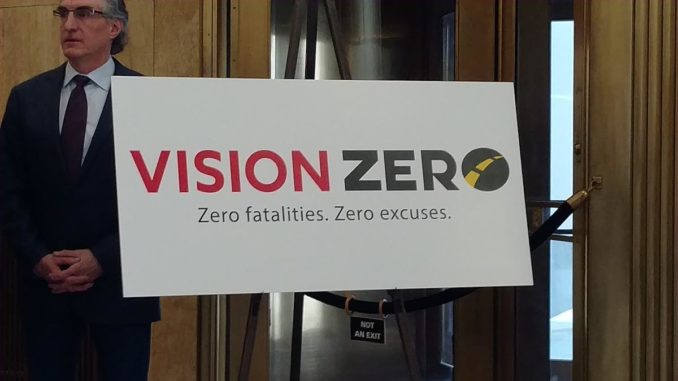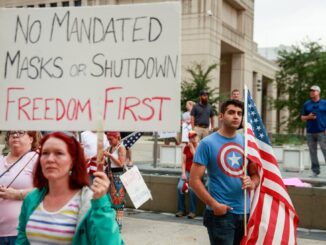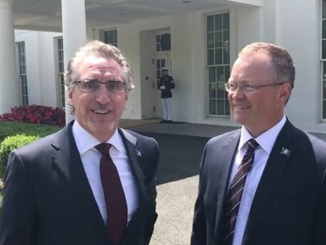
In January of 2018, Governor Doug Burgum was in attendance at the State Capitol with directors of the state Department of Transportation, the Highway Patrol, and the Health Department to unveil a new traffic safety initiative known as “Vision Zero“. As you’re probably aware, its goal is to have zero motor vehicle fatalities and serious injuries.
While well-intentioned, Vision Zero is nothing more than a feel good way of trying to show that the government is doing something to curb traffic deaths. Furthermore, the reality is that the end goal of zero is unrealistic. As long as there’s a human element to travel, we’ll always have fatalities. It’s a sad reality, but pretending otherwise is ridiculous.
One aspect of Vision Zero actually predates the initiative itself. It is the Crash Memorial Wall. As you can see, the North Dakota Department of Transportation started the wall in 2015 “to provide families a place to create memorials of loved ones killed in North Dakota traffic crashes.”
In other words, each person featured on the Crash Memorial Wall was put there at the request of family members. Each victim profile is placed with “the hope that sharing their stories will offer comfort to families and friends, and remind visitors about the importance of driving safely to help prevent future tragedies on North Dakota roads.” As of this publication, there are 22 memorials on the site.
But there’s another means in which Vision Zero uses the names of traffic fatalities that isn’t initiated — or even approved — by the families of victims.
I recently learned that the Vision Zero campaign sends letters to legislators representing the districts of those killed in traffic accidents. These letters are basically a lobbying effort for more regulation and more tax dollars. In addition, county commissioners and highway department personnel get copies too.
We’ve attached one of these letters to the end of this article. As you can see, it was sent to Senator Dale Patten (R – District 39) after one of his constituents was killed in a head-on collision. The letter is signed by Terry Traynor, Executive Director of North Dakota Association of Counties. Traynor is also a member of the Vision Zero Executive Leadership Team (see pg. 9).
When Jeff Eslinger — who is Assistant Executive Director of North Dakota Association of Counties — responded to my open records request, he made it a point to say:
“… We try our best to show sensitivity to the loss of any of our state’s citizens, and we never reveal anything that is not already part of the public record.”
But when I asked Eslinger if they get approval from family members before using the names of deceased loved ones in this way, he simply responded:
“No, we do not. It is the same information that is typically reported by news outlets.”
I’m not convinced that makes it okay. Would you want the government using the names of your deceased loved ones to push a political agenda without your permission?
We can certainly debate the proposed “solutions” identified by Terry Traynor in the letter. But let’s put those things aside for now. The question at hand is simple— Is it appropriate that Vision Zero essentially uses the deaths of individuals to push a political agenda— without the consent of their family?
If representatives of Vision Zero get permission — as they should — to honor victims of traffic crashes on a memorial wall, why don’t they ask before using names for political purposes? It’s just baffling to me.
When it comes to the case below, it seems there’s no law or educational outreach that would have prevented the tragic crash from occurring. Nobody knows why the victim swerved into oncoming traffic. Road conditions were good, she was wearing her seat belt, and the vehicle’s air bags deployed. Yet, Vision Zero still used it as another opportunity to lobby lawmakers for further regulations and more tax dollars.
How we all feel about the Vision Zero initiative itself is irrelevant here. What we should all be able to agree upon is that its representatives should end this practice now.
PLEASE LIKE & SHARE.
Sources:
- https://visionzero.nd.gov/
- https://theminutemanblog.com/2018/01/19/burgums-illogical-stance-on-seat-belt-laws-the-new-vision-zero-initiative/
- https://visionzero.nd.gov/memorial/
- https://www.dot.nd.gov/divisions/safety/docs/FINAL_NDDOT_SHSP.pdf
 Loading…
Loading…





